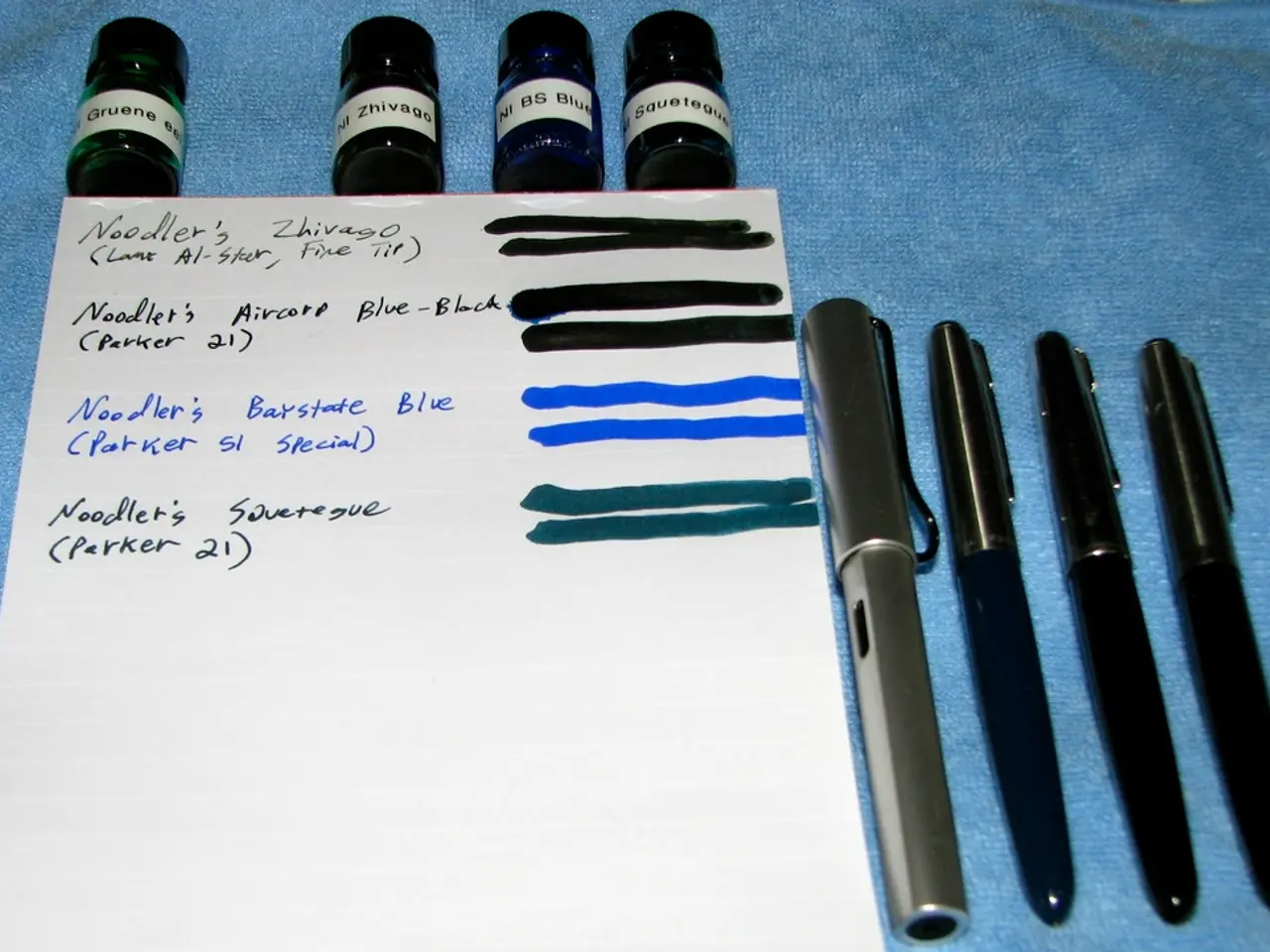Investigating Ink Toxicity: How Does Ink Poisoning Manifest?
Ink poisoning is a health concern that can occur in environments where ink products are prevalent. It's essential to understand the symptoms, prevention strategies, and safe practices to protect yourself and your family, especially young children who may be more susceptible.
Ink poisoning primarily causes extreme nausea and stomach upset in both adults and children. These symptoms typically occur only if a large amount of ink is deliberately ingested; small amounts, such as chewing on a pen, usually cause just a bad taste without serious effects [1][2][5].
Prevention strategies focus on avoiding ingestion of ink, especially by children. These include keeping pens, markers, and ink containers out of children's reach, educating them about the dangers of ingesting ink, supervising young children during the use of ink-based products, and promptly cleaning ink spills from hands and surfaces [1][2].
When choosing new ink products, involve children in the decision-making process. This can be educational and help them understand the importance of using safe materials. Familiarize yourself with brands known for producing safe, non-toxic ink products. Always examine packaging for safety certifications, such as ASTM D-4236 or AP (Approved Product), which indicate that the ink is non-toxic and safe for children [3]. Whenever shopping for ink products, look for options labeled as non-toxic. This helps ensure safety, particularly for young users.
Secure Storage Locations: Designate specific areas in your home for storing ink products, such as high shelves or locked cabinets that are out of reach of young children. Regularly review storage areas to ensure they remain secured and organized, and to assess if items are still safe to use [4]. Make sure that everyone in the household, including caregivers, is aware of the safe storage practices and the importance of keeping ink products out of reach.
In the event of suspected ink poisoning, remove ink sources from the area and encourage the affected person to drink water. If you suspect ink poisoning, quickly evaluate the individual's symptoms and call emergency services if severe symptoms arise or if a substantial amount of ink has been ingested [5]. Understanding the symptoms of ink poisoning is essential for timely treatment.
While ink poisoning is rare, it's crucial to prioritize the use of non-toxic ink products and practice safe storage to minimize the risk. By following these guidelines, you can create a safe and healthy environment for everyone in your home.
References:
[1] Mayo Clinic. (2021). Ingestion of Marker Ink: First Aid. Retrieved from https://www.mayoclinic.org/first-aid/first-aid-injuries/in-depth/marker-ink/art-20056634
[2] National Capital Poison Center. (2021). Marker Ingestion. Retrieved from https://www.poison.org/articles/marker-ingestion
[3] American Academy of Pediatrics. (2020). Lead Poisoning. Retrieved from https://www.healthychildren.org/English/safety-prevention/at-home/Medications-and-Tools/Pages/Lead-Poisoning.aspx
[4] Thiomersal. (n.d.). Retrieved from https://www.cdc.gov/vaccinesafety/concerns/thimerosal/index.html
[5] National Library of Medicine. (2021). Marker Ingestion. Retrieved from https://medlineplus.gov/ency/article/002847.htm
- To promote workplace-wellness and health-and-wellness, consider implementing education-and-self-development sessions about mental-health issues, skin-care routines, and therapies-and-treatments like CBD.
- Encourage personal-growth opportunities among your team members by fostering an environment that supports learning and development, such as workshops on drawing techniques to help improve focus and stress management.
- Invest in non-toxic art supplies, including drawing materials, for a safer work environment. This demonstrates your commitment to the health-and-wellness of your employees.
- When assessing the well-being of your organization, don't forget to address physical spaces and resources that contribute to employee happiness and productivity, such as facilitating dedicated areas for relaxation, meditation, and stress relief practices.
- Promote well-rounded development by incorporating health-and-wellness initiatives into employee benefits packages, offering coverage for therapy sessions, mental health days, and skin-care products as part of your workplace-wellness program.




